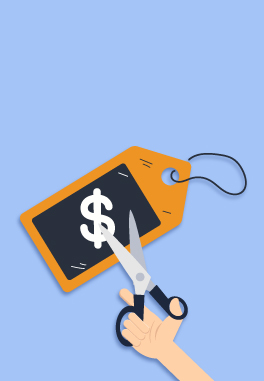Willingness to pay (WTP) is the maximum price a consumer is willing to pay in exchange for a product/service. We use this metric to price our products in line with customer expectations and increase the likelihood of purchase.
Here’s how to conduct one.
How to conduct a WTP research
Step one: Segment the market
As a first step, identify your buyer personas. A buyer persona is a profile that mirrors the ideal customer of a product. Usually, there are multiple buyer personas for a product.
Think of a person that earns a $5000 monthly income and another one that earns $7000.
Naturally, they have different levels of purchasing power. That’s one reason why businesses segment their target audience. The other factors they count in include:
- Location: Region, Country, State, City, sometimes even neighborhood
- Demography: Age, Income, Employment Status, Education, etc.
- Consumption Behavior: Regularity, Volume, Purpose
You can modify/expand the segmentation criterion based on your objectives/needs.
Once you’ve determined all of them, you need to collect information on each. Now it’s time to survey your buyer personas.
Step two: Survey the buyer personas
Suppose you identified 8 eight different buyer personas. Now it’s time to form sample groups for each of them. For the sake of simplicity, let’s name the first one ‘Buyer Persona (BP) 1. Say you have the contact information of 1000 individuals from BP1, and you’ve decided to survey 100 people from all BPs.
To achieve the highest accuracy, you should randomly select the individuals you’re going to survey. You should do so to avoid biased results. After you randomly select a sample group of customers, you ask them questions that could give you their motivations to buy the product, as well as WTP.
Sample questions
- Which price below is the maximum price you would be willing to pay for this product?
- Which price you think should be the minimum amount one should pay to purchase this product?
- What would you think would be a fair price for this product?
- Please rank order the product features below according to the value you see in each.
- Which product feature/features you think should be improved?
After you’ve collected all the answers you were looking for, it’s time to analyze the results.
Step three: Analyze the data
The data you obtained from the survey will reveal patterns and trends of each BP. The next step is to analyze the data to find out:
- what is the WTP range (the price range between the maximum amount and minimum amount they are willing to pay) of each BP group
- the commonalities in ingroup and intergroup purchase behavior
- which BP is the highest profit yielding group
- which product features contribute most to the WTP
- what are the common pain points
Say, you found out that most of your target audience would see greater value in the product if it had a certain extra feature. If that feature isn’t too costly, you can add it to your product, boost your sales and dramatically increase your revenue.
The final step is testing the prices within the WTP ranges you’ve obtained from your analysis.
Step four: Test price points
As mentioned above, what customers say and what they actually do differ. As the final step, you must test different price points to find the optimal price, which yields the highest profit. The survey will help you determine a range within which you can test different price points, instead of trying out numberless points.
As a shameless plug, we offer a competitive pricing intelligence tool that can help you test numerous price points without making an effort.
Reminder: The results will change over time
Each year, thousands of new e-commerce companies enter the market. That means your competitors increase in number and the customers’ expectations are constantly reshaped. If you pursue a value-based pricing strategy, you need to repeat your analysis regularly.



Leave a Reply